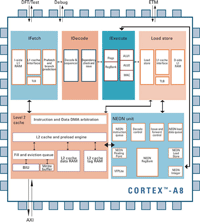“Holy crap, this thing is fast"

So claims iPhone developer Daniel Pasco of Seattle-based Black Pixel, in reference to the performance of the new iPhone 3G S. Upon receiving the iPhone 3G S, Pasco wanted to put the device through its paces to see what kind of performance the unit’s beefed up hardware delivers. He decided to run several different configurations of Plasma, a CPU-intensive application featuring particle animation that his company is developing for Tap Tap Tap.
For the test, he pitted the 3G S against the second generation iPod touch (the previous speed king of the iPhone family).
iPod Touch 2g:
CPU: Arm 6 running at 533 MHz
GPU: PowerVR MBX Lite
iPhone 3G S:
CPU: Arm 7 running at 600 MHz
GPU: PowerVR SGX
And the result? According to Pasco, the trend was “starkly apparent." The iPhone 3G S ran Plasma about twice as fast as the 2G iPod touch in every test. It’s worth noting that the application is only running OpenGL ES 1.1 code and has not been modified to take advantage of any of the improvements in OpenGL ES 2.0, an API no previous member of the iPhone family can utilize.
 Pasco also isolated the new device’s Cortex A8 processor to assess its particular performance level as compared to the family’s previous CPU.
Pasco also isolated the new device’s Cortex A8 processor to assess its particular performance level as compared to the family’s previous CPU.
The question of the CPU contribution to performance was nagging at me, so I dug up the C source code for the Scimark2 benchmark suite from NIST and put together a quick test application for the iPhone. Scimark2 is a set of numerically intensive tests including FFTs, successive over relaxation (SOR), Monte Carlo calculations, matrix multiplications and LU decomposition – calculations similar to the ones we do in our application.
I ran the test on the Touch and the 3gs with both small and large (cache-blowing) datasets to see how they compared.
And the results?
| iPhone 3G S: | 6.42 Mflops (small dataset) | 5.86 Mflops (large dataset) |
| 2g Touch: | 5.21 Mflops (small dataset) | 4.86 Mflops (large dataset) |
In the CPU tests, the 3G S showed itself to be around 20% faster than the 2G touch. A notable improvement, but based on these tests, it would seem that the real benefit to game developers will come from the new unit’s PowerVR SGX. Of course, the real test of the iPhone 3G S will come as games begin to support the Open GL ES 2.0 programmable pipeline.
Have a look at our iPhone 3G / 3G S comparison, posted yesterday.